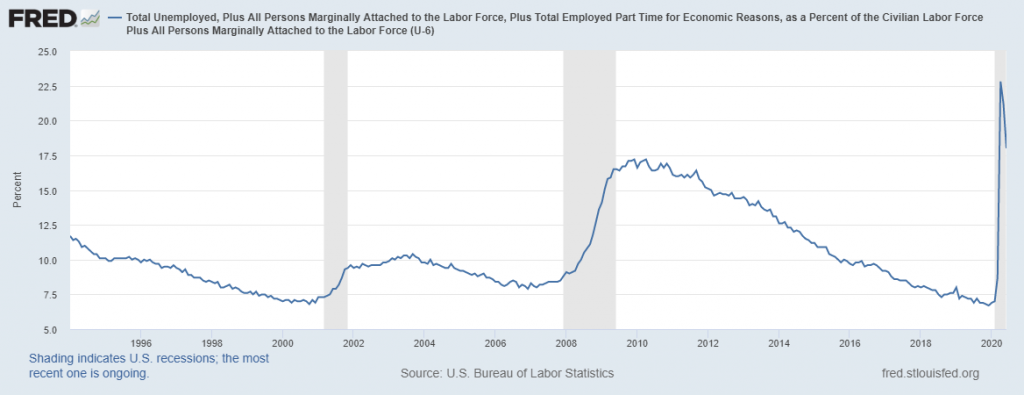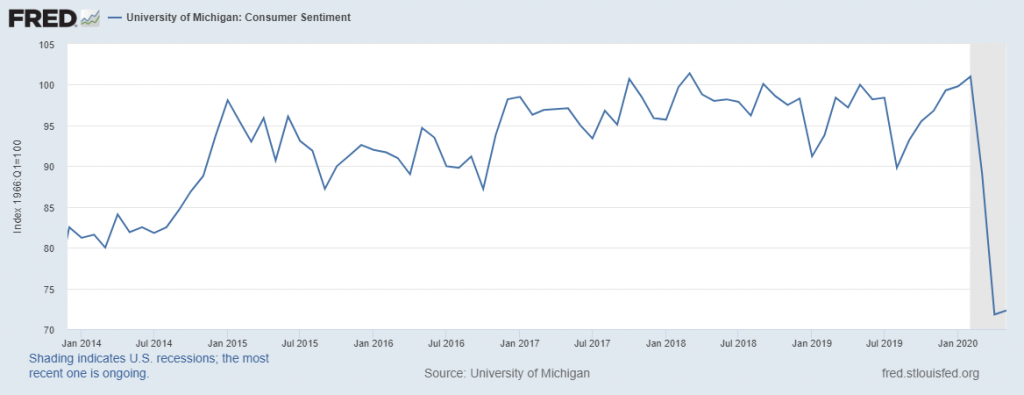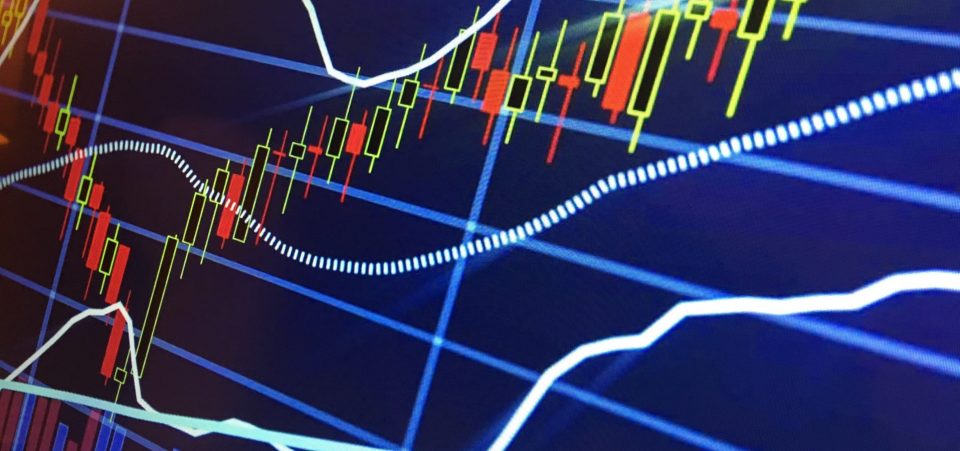For a V-Shaped Recovery, You Need Consumers to Be in Good Shape
If you think the U.S. economy is headed toward a V-shaped recovery, you could be making a big mistake. The economic slowdown could be here for a very long time.
What is a V-shaped recovery? In simple words, some economists think that the lockdowns due to the coronavirus pandemic have caused a massive decline in the economy, and that, now as businesses are re-opening, everything will get back to normal.
Here’s the problem.
For a V-shaped recovery in the U.S. economy, you need consumers to be in good health, have money to spend, and consumer sentiment to be optimistic.
At the moment, this is not true. The longer this remains the case, the longer the economic slowdown will continue. Mind you, don’t look at the stock market to see where the U.S. economy is going. It’s delusional currently.
American Consumers Are Facing a Lot of Headwinds
The U.S. is currently at the top of the list of countries with the most coronavirus cases. At last count, there were 1.8 million active cases in the U.S., and in certain states—like Florida, Texas, and Arizona—cases are accelerating. (Source: “Coronavirus Cases,” Worldometer, last accessed July 14, 2020.)
Sadly, the death toll is increasing too, and chances of a vaccine coming soon is still very unlikely.
Beyond this, when it comes to money to spend, have you looked at the employment figures?
Look at the chart below; it plots the U-6 unemployment rate in the United States. Essentially, this measure of the unemployment rate takes account of workers who are working part-time for economic reasons and those who are marginally attached to the labor force. It’s a much more comprehensive look at the unemployment rate than what is usually reported.

(Source: “Total Unemployed, Plus All Persons Marginally Attached to the Labor Force, Plus Total Employed Part Time for Economic Reasons, as a Percent of the Civilian Labor Force Plus All Persons Marginally Attached to the Labor Force (U-6),” Federal Reserve Bank of St. Louis, last accessed July 14, 2020.)
Right now, the U.S. economy has a U-6 unemployment rate of 18%! It was never this high even during the past two economic slowdowns.
If American don’t have jobs or are earning less than their normal wage, do you think they will go out and shop like they did before? It’s very unlikely.
Lastly, consumer sentiment is dull, to say the very least.
Look at another chart below. It plots the University of Michigan Consumer Sentiment Index. It tracks consumer confidence and essentially tells us how consumer spending will look. If consumers are pessimistic, this index falls, and it foretells that consumer spending may be in trouble.

(Source: “University of Michigan: Consumer Sentiment,” Federal Reserve Bank of St. Louis, last accessed July 14, 2020.)
In February, the University of Michigan Consumer Sentiment Index stood at 101. In May, it stood at 72.3, plunging 28% in matter of a few months. At its core, this means consumers are anything but optimistic.
Expect Economic Slowdown to Prevail
Dear reader, the idea of a V-shaped recovery has a nice tone to it. Maybe that’s why it’s getting a lot of attention these days. But be very careful.
Mark these words: the economic slowdown triggered by the coronavirus pandemic will have long-lasting impacts. I don’t really see many improvements coming to the U.S. economy until mid-2021. I also wouldn’t be shocked if the Federal Reserve lowers interest rates (to negative), in hopes of fighting the economic slowdown.






